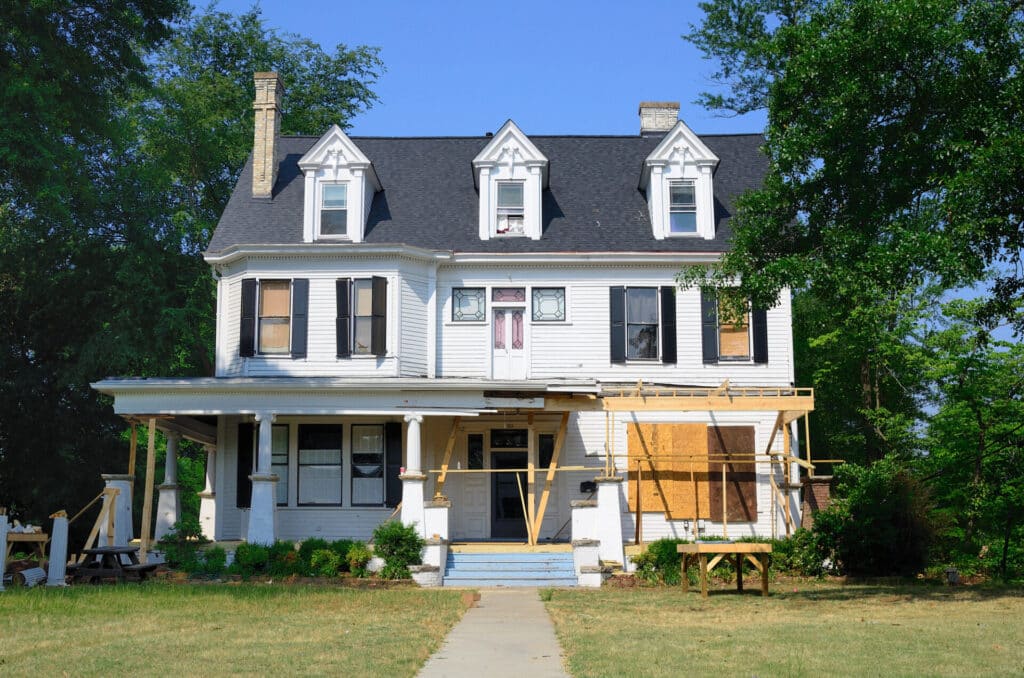
Renovating an old house can be an exciting and fulfilling endeavor. It can give new life and purpose to a home that has been around for generations and transform it into a modern and functional space that adheres to your lifestyle and preferences. This process can be daunting, though. There is a lot to consider when renovating an old house, from creating and sticking to a budget to deciding how much to preserve and modernize the structure. This article will cover some key things to consider when renovating an old house to help guide you through the process.
Set a realistic budget
Before beginning any renovation project, establishing a budget is essential. Creating a budget will help you stay on track financially and ensure you do not spend more money than intended. When renovating an old house, setting a realistic budget for the project is essential. Older homes often require more extensive refurbishment than newer ones. As such, renovating an old house can cost more than remodeling a more modern one.
To set a realistic budget, consider the extent of your project. What do you want to achieve with the renovation? Are you only remodeling certain areas of the house, or are you gutting the entire place and starting from scratch? What materials do you want to use? Do you plan to hire local residential contractors to do the work, or will you be doing it yourself? Keep these considerations in mind and create a budget that accommodates these factors.
When creating a budget, build in some wiggle room for unexpected costs. Even the most thorough renovation plans can have unexpected expenses. Plan ahead by setting aside 10-15% of your budget for these surprises.
Prioritize your needs and wants
It is essential to differentiate between your needs and wants when planning a renovation project, especially one for an old house. Evaluate your needs and prioritize accordingly. For example, if the roof leaks, focus on repairing the roof first. If the foundation is weak, invest in getting that fixed before embarking on cosmetic renovations.
Once you have the necessities adequately taken care of, consider your wants. Consider what features would enhance the functionality and aesthetics of the space and improve your quality of life. For example, do you need a more oversized kitchen or a second bathroom? Do you want to add a fireplace or a porch? Make a list of these considerations and rank them in order of importance. This will help you decide what projects to spend money on and which to hold off on.
Preserve what you can
One of the most significant advantages of renovating an old house is the character and charm that comes with it. That said, preserving as much of the original structure as possible is essential. This will not only preserve the history and authenticity of the home, but it can also potentially save you money.
Before jumping in and gutting the whole house, consider what can be saved. For example, if the original hardwood floors are in good condition, consider refinishing them instead of replacing them. If the kitchen cabinets are still functioning, consider giving them a fresh coat of paint or new hardware instead of replacing them entirely.
However, it is crucial to consider the risks associated with preserving older components of an old house. Old electrical wiring, lead paint, and asbestos insulation are just a few of the hazards found in older buildings. Ensure you properly assess the potential risks and consult with professionals as needed.
Upgrade and modernize where necessary
Preserving key components of the original structure of your old house is essential, but that does not mean you cannot upgrade and modernize other areas. Older homes can be outdated regarding energy efficiency, and modern technology can add significant value in terms of functionality and convenience.
Consider the areas of the home that need to be upgraded, such as the heating and cooling system, the plumbing, and the electrical system. These are the three most critical systems in a house. If they are outdated, safety risks and inefficiencies could cost you money in the long run.
Additionally, consider modernizing home elements that can improve your daily life’s functionality and convenience. This might include adding smart home systems, such as a security system, thermostat, or lighting. Upgrading outdated appliances can also save you money on energy bills.
Maintain the original architecture
Older homes have unique architectural features that require different maintenance techniques than modern ones. These features may include crown molding, arched doorways, and decorative trim. Maintaining the original architecture of an old house can be vital in preserving its value and charm.
Before starting your renovation project, take the time to research the history and architecture of your home. This will give you an idea of what original features you should aim to maintain. For example, removing plaster or drywall to reveal the original brick wall can add character and value to the home.
When preserving original architectural details, work with a contractor with experience with older homes. They will be better equipped to navigate these unique challenges and help you keep these unique features.
Ensure compliance with local regulations
Following local regulations and guidelines is essential when renovating an old house. This includes zoning laws, building codes, and historical district regulations. Failing to comply with these regulations can be costly and potentially diminish the home’s value.
Before starting your project, consult with the local planning and zoning department or a professional specializing in historical districts to understand the guidelines and requirements for your area. They will be able to guide you through the process and help ensure you remain compliant.
Be realistic about the timeline
Renovating an old house is a time-consuming process. It is essential to be realistic about the timeline and plan accordingly. The project’s complexity and scope will affect the project’s duration.
Before beginning any renovation, create a timeline that outlines each project’s duration and prioritize them according to importance. Remember to keep in mind the possibility of unexpected delays in the project.
It is essential to understand that there will be a lot of things that need to be done before starting the actual renovation project. You may need to have the home inspected, permits obtained, and the utilities disconnected, among other necessary actions. You may also need to plan temporary accommodations while the renovation is underway. Make sure your timeline accommodates these pre-renovation tasks as well.
Conclusion
Renovating an old house can be a daunting task. Still, the right approach can be an exciting and fulfilling adventure. From setting a realistic budget to preserving the original structure’s history while modernizing the crucial areas, these tips can guide you through the renovation process. Keep in mind that renovating an old house requires patience and careful planning. But with the right approach, you can breathe new life into an old home and create a space that meets your needs and preferences while preserving its unique character.
